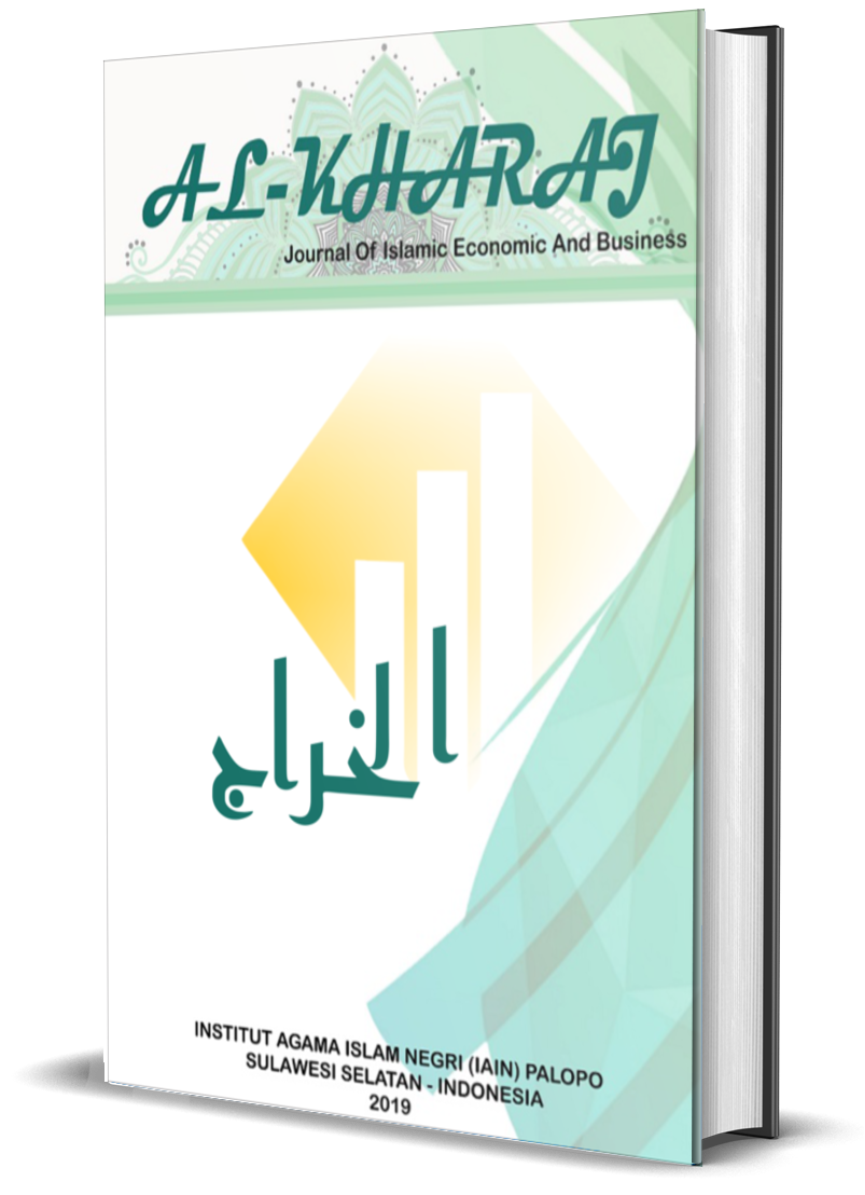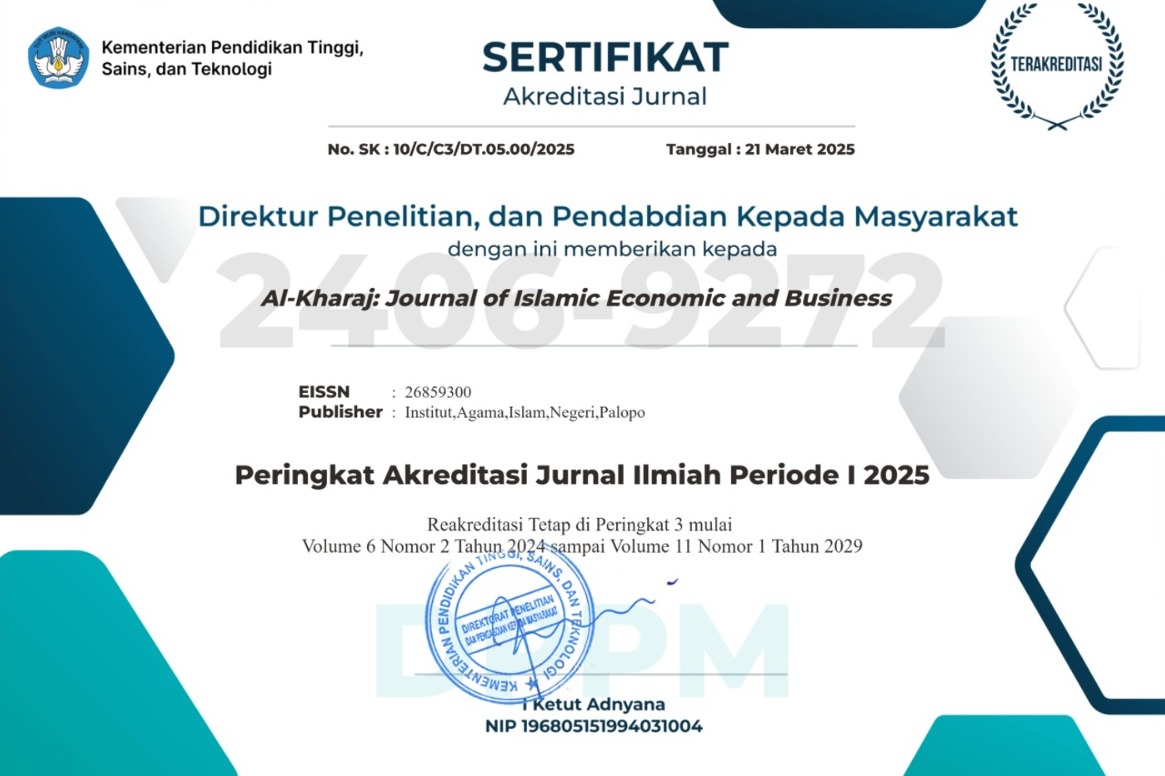The Effect of Shopee’s Twin Date Campaign on Impulsive Buying: The Mediating Role of FOMO and Moderating Self-Control
DOI:
https://doi.org/10.24256/kharaj.v7i4.8095Keywords:
Shopee’s Twin Date Campaign; Impulsive Buying; Fear of Missing Out; Self-ControlAbstract
This study aims to examine the effect of Shopee's Twin Date Campaign on impulsive buying, focusing on the mediating role of fear of missing out and the moderating role of self-control. This study uses four theories, namely Elaboration Likelihood Model Theory, Social Comparison Theory, Ego Depletion Theory, and Cognitive Emotional Theory, involving 384 respondents, according to Lemeshow's formula. The criteria for respondents were active users of Shopee and social media in Indonesia during the Shopee Twin Date Campaign. The method used in this study was Partial Least Squares Structural Equation Modeling (PLS-SEM) with the assistance of SmartPLS Version 4 software. Based on the findings, the Shopee Twin Date Campaign significantly and positively influenced Impulsive Buying alongside Fear of Missing Out. It further emerged that Fear of Missing Out mediates the Shopee Twin Date Campaign and Impulsive Buying relationship, while Self-control also emerged as a significant moderator.. These findings support to the development of digital marketing communication with a focus on psychological mechanisms in driving consumer behavior. In addition, this study can also be a reference for e-commerce industry developers and policymakers to design more responsible campaigns that take consumer literacy into consideration.
References
Azzahra, S. N., & Gunawan, R. S. (2024). Factors Affecting Millennials and Gen Z Preferences in Using Cashless Payment Systems in DKI Jakarta. KnE Social Sciences, 8, 230–245. https://doi.org/10.18502/kss.v9i14.16102
Baumeister, R. F., Bratslavsky, E., Muraven, M., & Tice, D. M. (1998). Ego Depletion : Is the Active Self a Limited Resource ? Journal of Personality and Social Psychology, 74(5), 1252–1265. https://doi.org/https://doi.org/10.1037//0022-3514.74.5.1252
Buunk, A. P., & Gibbons, F. X. (2007). Social Comparison: The End of a Theory and The Emergence of a Field. Organizational Behavior and Human Decision Processes, 102(1), 3–21. https://doi.org/10.1016/j.obhdp.2006.09.007
Cholifah, F., & Husen, A. (2024). Impulse Buying Behaviors and Customer Trust During Twin Date Online Promotion : Using Prisma Method with Systematic Literature Review. Dinasti International Journal of Education Management and Social Science, 6(3), 1761–1771. https://doi.org/https://doi.org/10.38035/dijemss.v6i3
Cyr, D., Head, M., Lim, E., & Stibe, A. (2018). Using the Elaboration Likelihood Model to Examine Online Persuasion Through Website Design. Information and Management, 55(7), 807–821. https://doi.org/10.1016/j.im.2018.03.009
Dimock, M. (2019). Defining generations: Where Millennials end and Generation Z begins. Pew Research Center, 1. https://pewrsr.ch/2szqtJz
Festinger, L. (1954). A theory of Social Comparison Processes. Human Relations, 7(2), 117–140. https://doi.org/https://doi.org/10.1177/001872675400700202
Friese, M., Loschelder, D. D., Gieseler, K., Frankenbach, J., & Inzlicht, M. (2018). Is Ego Depletion Real? An Analysis of Arguments. Personality and Social Psychology Review, 23(2), 107–131. https://doi.org/10.1177/1088868318762183
Habib, M. D., & Ashraf, N. (2023). COVID-19 Outbreak : Consumer Impulsive Buying Behavior towards Personal Safety and Healthcare Products. Pakistan Journal of Commerce Anda Social Science, 17(3), 535–557.
Hagger, M. S., Wood, C., Stiff, C., & Chatzisarantis, N. L. D. (2010). Ego Depletion and the Strength Model of Self-Control: A Meta-Analysis. Psychological Bulletin, 136(4), 495–525. https://doi.org/10.1037/a0019486
Hair, J., & Alamer, A. (2022). Research Methods in Applied Linguistics Partial Least Squares Structural Equation Modeling ( PLS-SEM ) in second language and education research : Guidelines using an applied example. Research Methods in Applied Linguistics, 1(3), 16. https://doi.org/10.1016/j.rmal.2022.100027
Hair, J. F., Balck, W. C., Babin, B. J., & Anderson, R. E. (2019). Multivariate Data Analysis (Eighth Edition). In Gedrag & Organisatie (8Th ed., Vol. 19, Issue 3). Cengage Learning EMEA. https://doi.org/10.5117/2006.019.003.007
Hair, J. F., Hult, G. T. M., Ringle, C. M., Sarstedt, M., Danks, N. P., & Ray, S. (2021). Partial Least Squares Structural Equation Modeling (PLS-SEM) Using R: A Workbook. In Springer. https://doi.org/10.1080/10705511.2022.2108813
Hair, J. F., Sarstedt, M., Hopkins, L., & Kuppelwieser, V. G. (2014). Partial least squares structural equation modeling (PLS-SEM): An emerging tool in business research. European Business Review, 26(2), 106–121. https://doi.org/10.1108/EBR-10-2013-0128
Hamid, R. S., & Anwar, S. (2019). Struktural Equation Modeling (SEM) Berbasis Varian: Konsep Dasar dan Aplikasi dengan Program SmartPLS 3.2.8 dalam Riset Bisnis (Abiratno, S. Nurdiyanti, & A. D. Raksanagara (eds.); 1st ed.). PT Inkubator Penulis Indonesia.
Hapsari, R., & Pamungkas, Y. B. (2024). AUDIENCE COGNITION THROUGH ELABORATION LIKELIHOOD MODEL PROCESS : INSTAGRAM CONTENT OF INDONESIAN HEALTH MINISTRY ON. Interdisciplinary Journal of Communication, 9(1), 85–104.
Haryono, S. (2016). Buku 3 in 1 Metode SEM Untuk Penelitian Manajemen dengan Amos Lisrel dan PLS. PT.Intermedia Personalia Utama.
Henseler, J., Dijkstra, T. K., Sarstedt, M., Ringle, C. M., Diamantopoulos, A., Straub, D. W., Ketchen, D. J., Hair, J. F., Hult, G. T. M., & Calantone, R. J. (2014). Common Beliefs and Reality About PLS: Comments on Rönkkö and Evermann (2013). Organizational Research Methods, 17(2), 182–209. https://doi.org/10.1177/1094428114526928
Herachwati, N., Sulistiawan, J., & Nguru, M. G. B. (2015). Pengaruh Social Comparison pada Work Attitude: Peran Pemoderasian Competitive Work Group. Journal Siasat Bisnis, 19(2), 146–160. https://doi.org/https://doi.org/10.20885/jsb.vol19.iss2.art5
Hesti, D., Khasanah, N., & Pamungkas, Y. B. (2024). Pornography Consumption and Generation Z Sexual Behavior : The Role of Risk and Self-Control. 23(1), 115–130.
Lemeshow, S., Hosmer, David, W., Klar, J., & Lwanga, Stephen, K. (1990). Adequacy of Sample Size in Health. In World Health Organization. https://doi.org/10.1002/bimj.4710330419
Mursita, L. Y., Mustafida, N., & Rachmadia, R. (2019). Ego Depletion and Its Effect on Auditors’ Judgment and Decision-Making Quality. Jurnal Akuntansi Dan Keuangan Indonesia, 16(2), 224–244. https://doi.org/10.21002/jaki.2019.12
Nasr, S. A., Sunitiyoso, Y., & Suhaimi, H. (2023). The Effect of Fear of Missing Out on Buying and Post-Purchasing Behaviour toward Indonesia’s Generation Z Online Shoppers (Case study: E-Commerce Indonesia). International Journal of Current Science Research and Review, 06(09), 6246–6262. https://doi.org/10.47191/ijcsrr/v6-i9-15
Nosaly, F. S., Andriana, A. N., Ilmu, F., Politik, I., Bisnis, A., & Mulawarman, U. (2024). Pengaruh Promo Tanggal Kembar , Gratis Ongkos Kirim , Metode Pembayaran S-Pay Later Terhadap Keputusan Pembelian Di Marketplace Shopee. Journal of Business and Economics Research, 5(3), 398–408. https://doi.org/10.47065/jbe.v5i3.5923
Pamungkas, Y. B., Yuwanto, Adnan, M., Hasfi, N., & Hapsari, R. (2025). The Power of Virality : Source Credibility, Moral Emotions, and Social Engagement Driving Public Mobilization in ‘ Peringatan Darurat ’ Videos. Journal of Intercultural Communiccation, 25(3), 25–35.
Petty, R. E., Cacioppo, J. T., & Schumann, D. (1983). Central and Peripheral Routes to Advertising Effectiveness: The Moderating Role of Involvement. Journal of Consumer Research, 10(2), 135. https://doi.org/10.1086/208954
Polyportis, A., & Kokkinaki, F. (2024). How do you happen to feel ? The effect of certainty – uncertainty appraisals of incidental emotions on consumer affective forecasting error. Journal of Consumer Behavior, 23(5), 2161–2750. https://doi.org/10.1002/cb.2333
Populix. (2023). Indonesian Shopper Behavior on Promotion Week in the Face of Economic Uncertainly.
Putra, T. M., & Pohan, S. (2024). Pengaruh Iklan Tanggal Kembar terhadap Perilaku Impulsive Buying pada Platform E-Commerce di Indonesia : Kajian Literatur Kualitatif. Jurnal Penelitian Inovatif, 4(4), 2625–2638.
Reisenzein, R. (2009). Emotions as Metarepresentational States of Mind: Naturalizing the Belief-Desire Theory of Emotion. Cognitive Systems Research, 10(1), 6–20. https://doi.org/10.1016/j.cogsys.2008.03.001
Santika, E. F. (2024). Shopee, e-Commerce yang paling Diandalkan Gen Z dan Milenial Indonesia.
Savitri, C., Faddila, S. P., Iswari, H. R., Anam, C., Syah, S., Mulyani, S. R., Sihombing, P. R., Kismawadi, E. R., Pujianto, A., Mulyati, A., Astuti, Y., Adinugroho, W. C., Imanuddin, R., Nuraini, A., Taufik, U., & Rohana, H. (2021). Statistik Multivariat Dalam Riset (I. Ahmaddien (ed.)). Widina Bhakti Persada Bandung.
Simamora, V., & Islami, P. (2023). Millennial And Generation Z Online Purchasing Decisions On Indonesian Marketplace. Journal Research Of Social Science, Economics, And Management, 02(8), 1706–1721. https://doi.org/10.36418/jrssem.v2i08.380
Swilley, E., & Goldsmith, R. E. (2013). Black Friday and Cyber Monday: Understanding consumer intentions on two major shopping days. Journal of Retailing and Consumer Services, 20(1), 43–50. https://doi.org/10.1016/j.jretconser.2012.10.003
Verhagen, T., & Van Dolen, W. (2011). The Influence of Online Store Beliefs on Consumer Online Impulse Buying: A Model and Empirical Application. Information and Management, 48(8), 320–327. https://doi.org/10.1016/j.im.2011.08.001
Wang, Y., Pan, J., Xu, Y., Luo, J., & Wu, Y. (2022). The Determinants of Impulsive Buying Behavior in Electronic Commerce. Sustainability, 14(12), 1–18. https://doi.org/https://doi.org/10.3390/su14127500
WeAreSocial, & Meltweter. (2024). Digital 2024.
Wijaningsih, R., Ekawati, E., & Fachri, A. (2024). Peran Fear of Missing Out Memediasi Pengaruh Promo Event Tanggal Kembar E-Commerce Shopee Terhadap Impulsive Buying Tendency Pada Generasi Z Pengguna Shopee di Bandar Lampung. Gemilang: Jurnal Manajemen Dan Akuntansi, 4(3), 58–72. https://doi.org/https://doi.org/10.56910/gemilang.v4i3.1531
Wiyono, G. (2011). Merancang Penelitian Bisnis dengan Alat Analisis SPSS 17.0 & SmartPLS 2.0 (Pertama) (Pertama). UPP STIM YKPN.
Yonatan, A. (2025). Shopee jadi E-Commerse yang Paling Banyak Diakses di Indonesia 2025. https://goodstats.id/article/shopee-jadi-e-commerce-yang-paling-banyak-diakses-di-indonesia-2025-3COz0
Zuo, W., & Lian, Z. (2022). Research on the Inducing Mechanism of Customers’ Impulsive Buying in “Double 11” Shopping Carnival. SHS Web of Conferences, 151, 01028. https://doi.org/10.1051/shsconf/202215101028
Downloads
Published
How to Cite
Issue
Section
Citation Check
License
Copyright (c) 2025 Yusrilzal Rokhim, Yoma Bagus Pamungkas

This work is licensed under a Creative Commons Attribution-ShareAlike 4.0 International License.
Authors retain copyright and grant the journal right of first publication with the work simultaneously licensed under a Creative Commons Attribution-ShareAlike 4.0 International License. In line with the license, authors are allowed to share and adapt the material. In addition, the material must be given appropriate credit, provided with a link to the license, and indicated if changes were made. If authors remix, transform or build upon the material, authors must distribute their contributions under the same license as the original.









